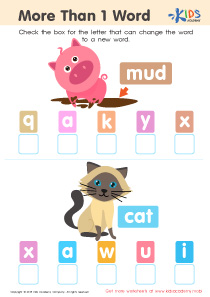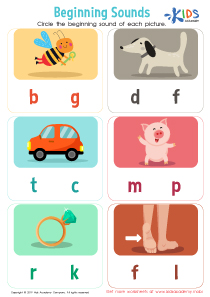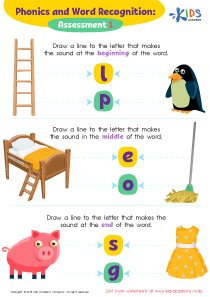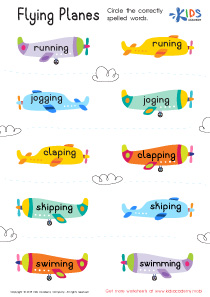Ending Sounds Worksheets for Ages 4-7
6 filtered results
-
From - To
Enhance your child's phonics skills with our Ending Sounds Worksheets for Ages 4-7. These engaging and educational activities help young learners recognize and match the closing sounds of words, a crucial step in early reading development. Full of colorful illustrations and tailored exercises, our worksheets are designed to make learning fun and interactive. Perfect for preschool and early elementary students, each worksheet ensures kids build a strong foundational understanding of phonemic awareness. Browse our collection today and watch your little one master the magic of ending sounds in no time!
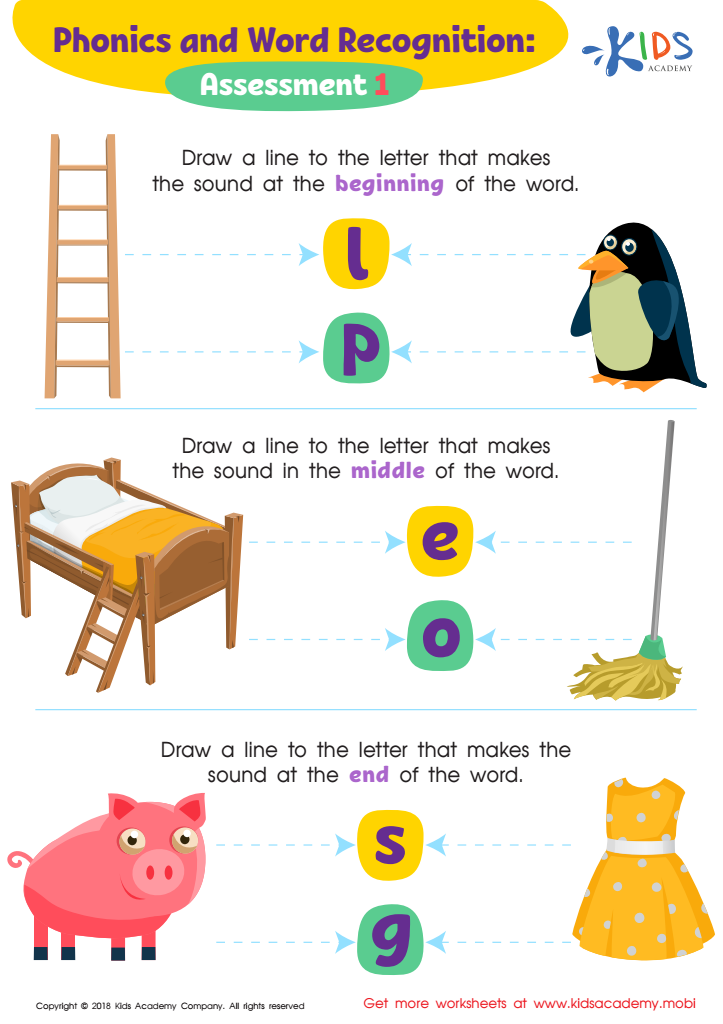

Phonics and Word Recognition: Assessment 1 ELA Worksheet
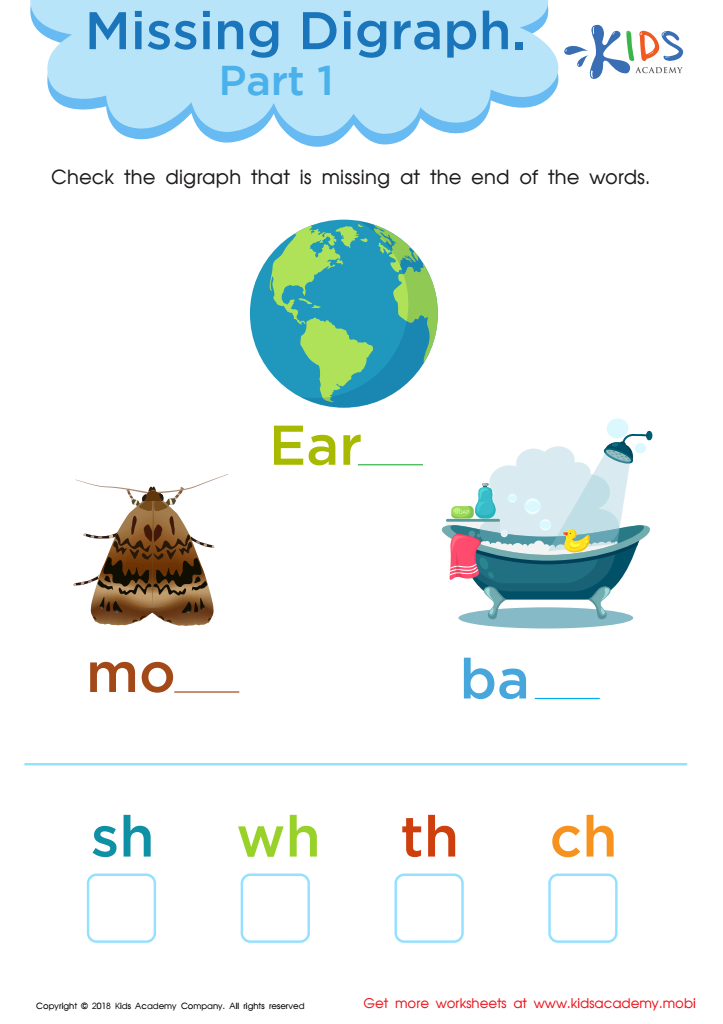

Missing Digraph: Part 1 Worksheet
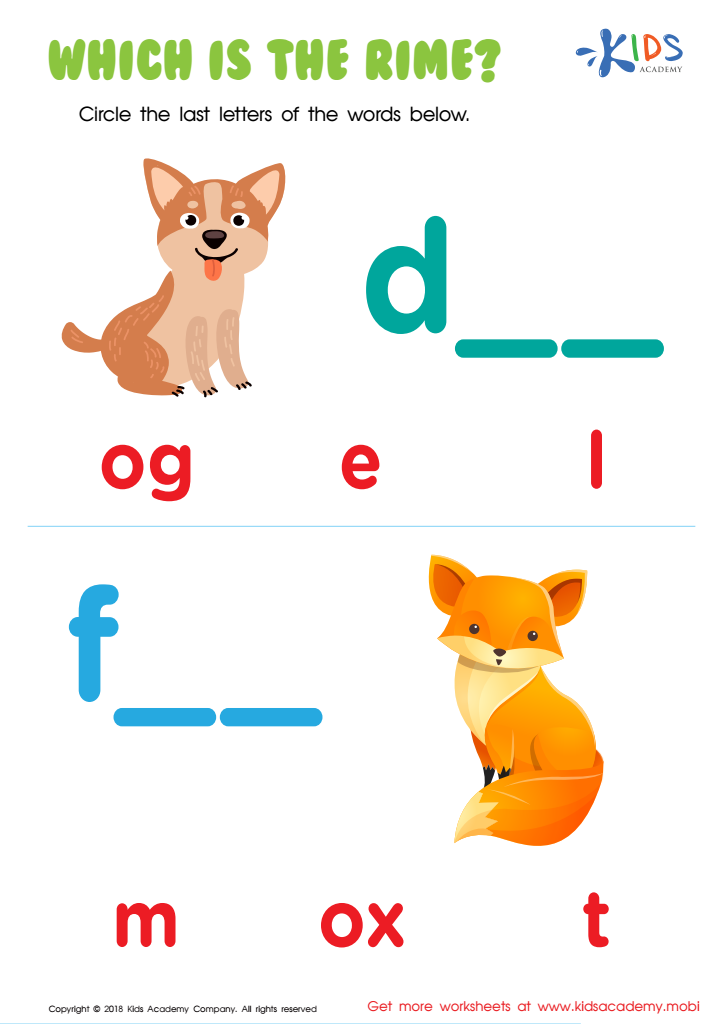

Which Is the Rime? Worksheet
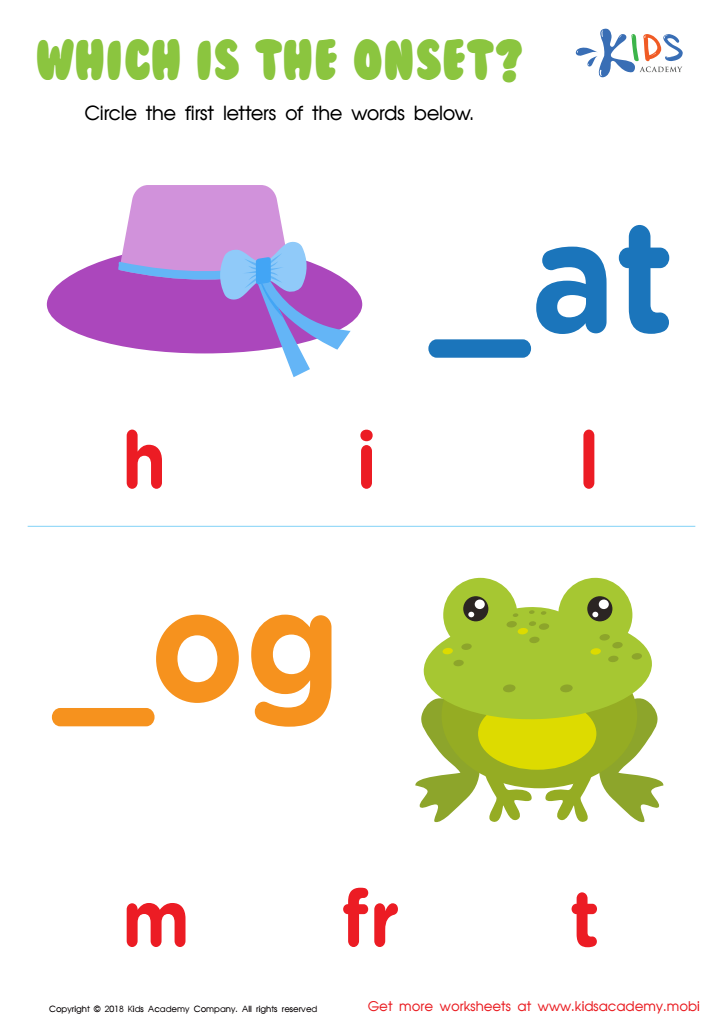

Which Is the Onset? Worksheet
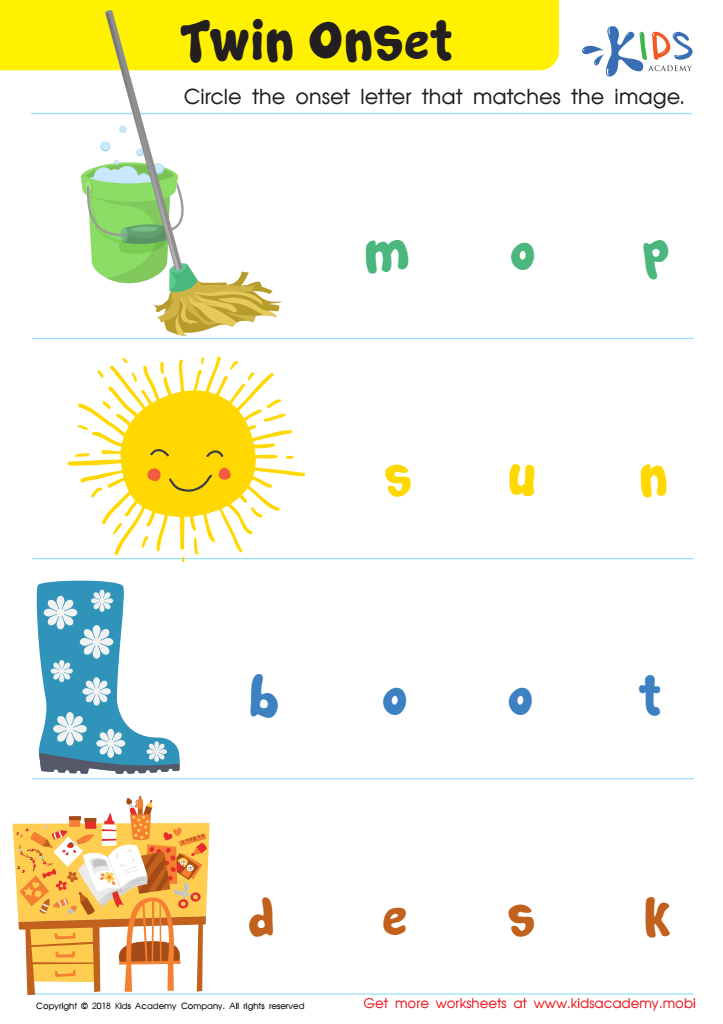

Twin Onset Worksheet
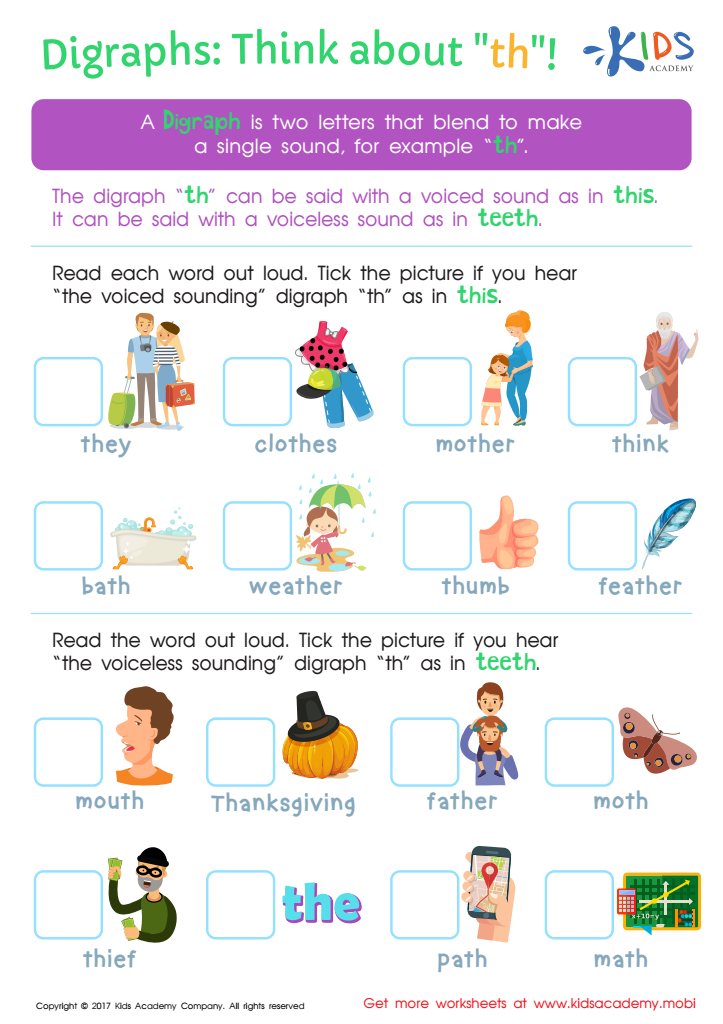

Digraphs: Think About "th" Worksheet
Understanding ending sounds is crucial for young learners (ages 4-7) as it directly impacts their literacy development. When children can identify and articulate ending sounds, they improve their phonemic awareness—the ability to hear, identify, and manipulate individual sounds in spoken words. This skill is foundational for reading and writing success.
Knowing ending sounds helps children decode words when they are reading. Recognizing the sound structure of words enables them to blend sounds together to form words accurately. This skill enhances their reading fluency, making them more confident and proficient readers. Additionally, understanding ending sounds aids in spelling. When children are aware of how words end phonetically, they can spell words more accurately, even unfamiliar ones.
Furthermore, mastering ending sounds helps in building a vast vocabulary. As children discern different word endings, they can more readily make sense of new words and use them correctly in context, thereby improving their language skills overall. For parents and teachers, investing time and activities in practicing ending sounds is a proactive approach to prevent future academic struggles. It helps children develop essential communication skills that will serve as a bedrock for their entire educational journey. By prioritizing this aspect of phonemic awareness early on, adults can support children's success in reading, writing, and overall learning.

 Assign to the classroom
Assign to the classroom




